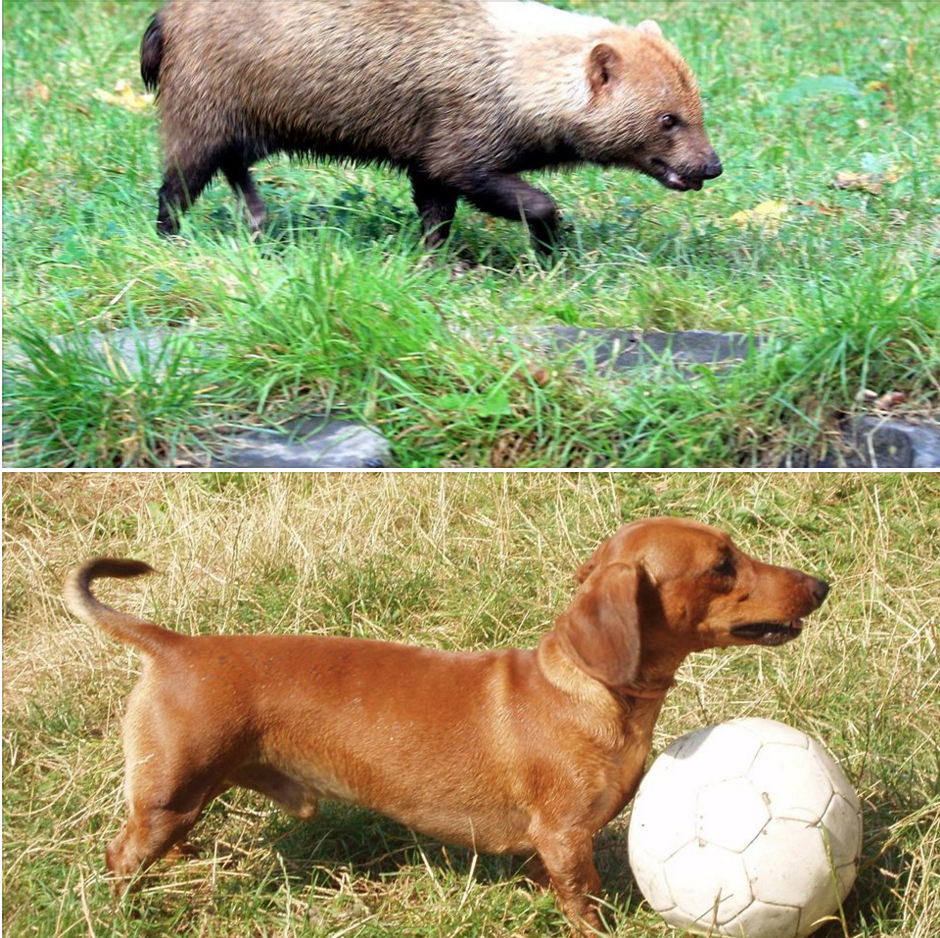
Learning about how our dogs work (mechanically speaking) in piecemeal Facebook fashion is no way to learn about dog structure at all, but if a thumbnail post persuades even one person that soundness matters in a dog that will never set foot in a show ring, mission accomplished. If a thumbnail post underscores that “form follows function,” terrific.
Check out the photo of this bush dog. Because this South American critter sleeps in hollow logs and earth cavities, it spends half its day underground. But there’s another reason the bush dog spends so much time in tunnels and burrows: It eats what lives there. If it can’t get to dinner, the bush dog doesn’t eat. If it doesn’t eat, it dies. The bush dog’s body has evolved to be low enough to slide into a burrow to pursue dinner, but have enough leg to backpedal and avoid injury, and still be able to “fold” so it can crawl through a burrow. It can’t have so much chest that the chest scraps along the dirt floor, but a “long chest” gives the bush dog’s heart and lungs enough room to expand without making its shoulder assembly too wide. The longer the rib-cage, the more air can be processed.
Guess what else is built this way? The Dachshund, of course, and for much the same reasons.
We always defer to breed experts (or bush dog experts, for that matter) to expand our knowledge!
Image of Bush dog from the Prague Zoo was uploaded by Karelj and found on Wikicommons under the Creative Commons Attribution-Share Alike 3.0 Unported license. Image of the Dachshund was from the same source but uploaded by Користувач:Turzh.
